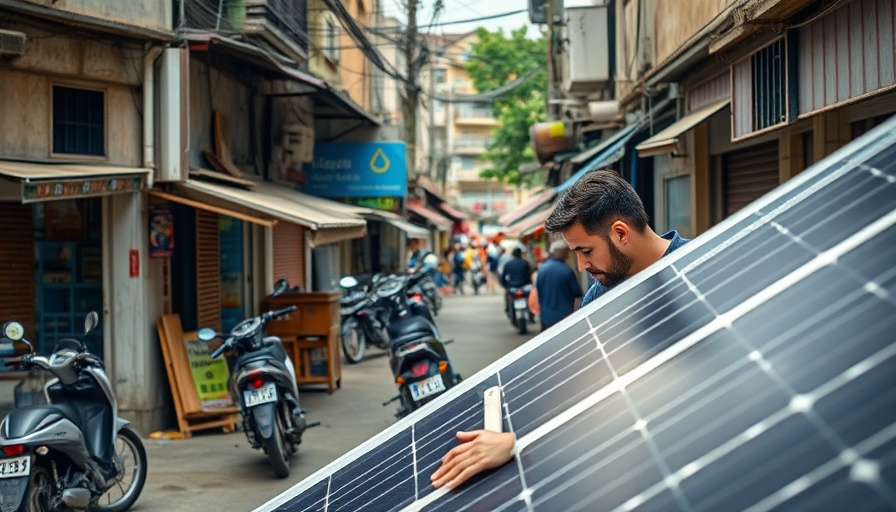
Asia's Renewable Energy Dilemma: Choosing Between Short Gains and Long-Term Sustainability
With the recent withdrawal of the United States from the Just Energy Transition Partnership (JETP), Asia is at a crossroads in its energy future. As fossil fuel prices drop, governments must grapple with a critical decision: pursue immediate economic benefits or invest in sustainable energy partnerships that promise long-term ecological viability. As highlighted by Biman Mukherji, Asia's energy landscape is now shadowed by a lack of U.S. support, pushing nations that rely heavily on fossil fuel imports to reconsider their energy strategies.
Historical Context: The Roots of the JETP Withdrawal
The U.S.'s exit from JETP is not merely a standalone decision; it reflects a broader strategy under the current administration favoring domestic oil and gas production. Originally conceived as a platform to shift developing countries away from coal, JETP aimed to mobilize a collective effort from public finance and private investments. The program intended to channel over $45 billion into transitional initiatives, yet now it suffers as the U.S.'s focus shifts hastily from clean energy solutions, potentially exacerbating climate change in Asia’s most vulnerable regions.
Current Realities: Pressures on Asian Nations
The price volatility of fossil fuels adds pressure for Asian nations to revert back to carbon-intensive energy sources. Brent crude prices have already slid to a five-month low, tempting governments to disregard their commitments to renewable energy growth. Many Asian nations, suffering from energy scarcity, are now faced with potentially detrimental choices fueled by a conducive global oil market. Yet, this pivot to fossil fuels not only risks international climate commitments but could also lead to a more significant climate crisis.
Emerging Alternatives: Looking Beyond U.S. Partnerships
Despite the setback with U.S. retreat, opportunities exist for Asia to pivot towards more sustainable energy partnerships. Countries like Germany and Japan have stepped up their involvement in the JETP initiative, reaffirming their commitment to clean energy transitions in nations like Indonesia and Vietnam. By collaborating with these nations, Asia can capitalize on international ingenuity and funding alternatives to limit dependency on fossil fuels.
Future Insights: The Road Ahead for Renewable Energy
Experts posit that Asian countries can lead the charge in transforming the global energy landscape, provided they focus on swift renewable energy projects. Short-term discussions surrounding energy supply must harmonize with longer-term investments in solar, wind, and hydropower solutions. As highlighted by Grant Hauber, such sustainability moves can counterbalance the volatility of global energy markets, ultimately fostering a more stable economic and environmental future for the region.
Risk Factors: The Challenges of Transitioning
Transitioning to renewable energy is rife with risks, primarily due to the heavy capital investments required. With Indonesia's commitment of $100 billion and Vietnam's $86 billion earmarked for clean energy projects, the financial commitment is significant. The struggle lies not only in securing these funds but also in curating effective plans that integrate renewable energy effectively into existing frameworks. Asia's ability to navigate these risks will determine the future of energy sustainability.
Call to Action: Embrace Sustainable Solutions Now
As Asia seeks new partners in the wake of the U.S. withdrawal from climate aid, the moment to act is now. Regions in demand for clean energy solutions must engage with alternative partners ready to open doors to sustainable practices that benefit economies and the environment alike. Investing in renewables strengthens not just energy security but reinforces commitments to combating climate change. Consumers should encourage their governments to prioritize transition strategies that lead to energy stability and climate recovery.
 Add Row
Add Row  Add
Add 



Write A Comment